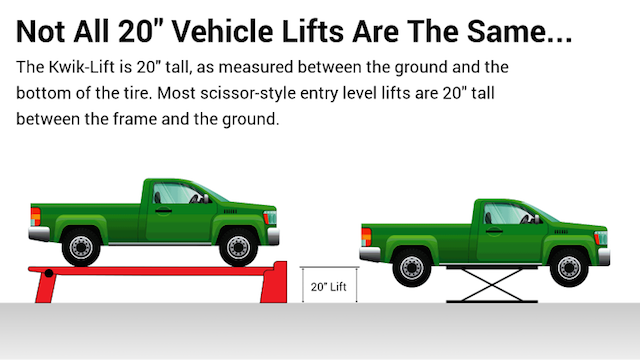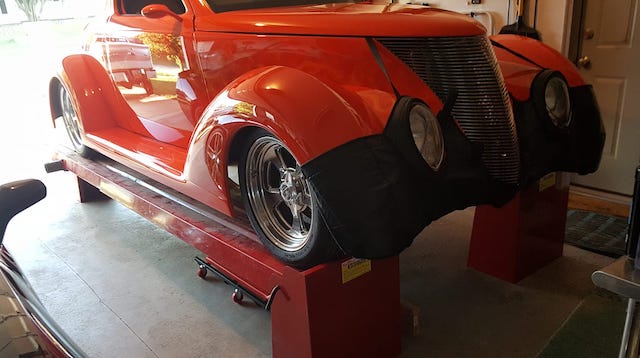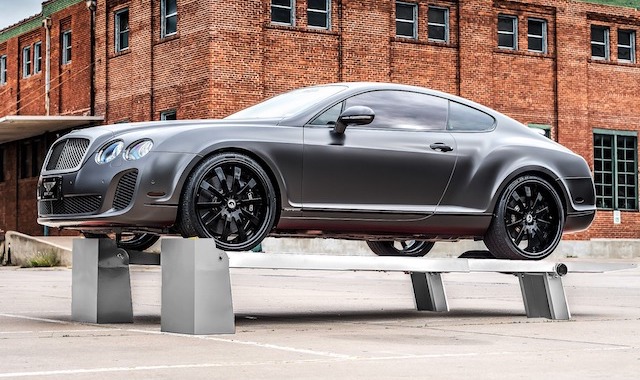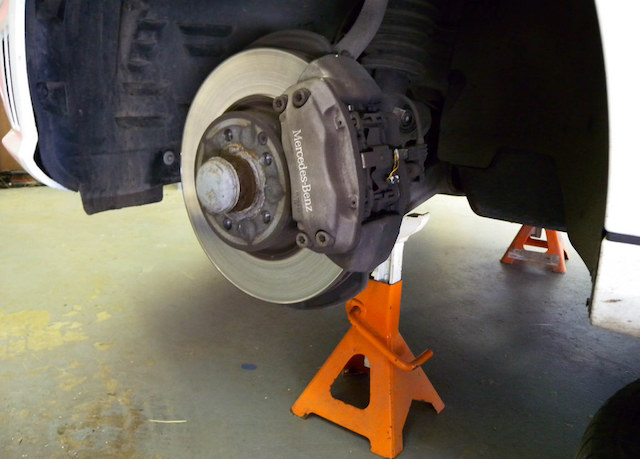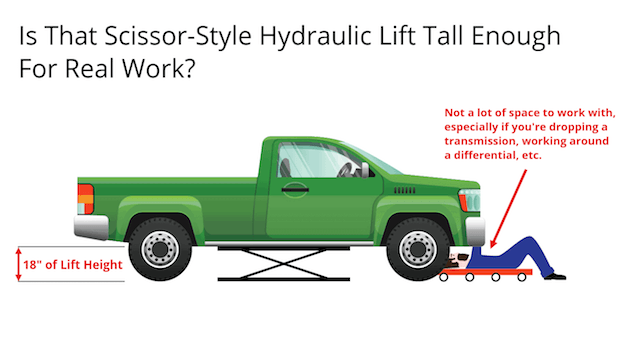
When looking for a car lift to use in your home garage, it’s a good idea to take all of your needs into consideration before you buy. You’ll get the most bang for your buck if you select a lift that allows you to do the necessary work on your vehicle safely and comfortably, rather than the cheapest lift or the lift with the most gee-whiz technology.
When shopping, you’ll probably narrow your search down to a couple of options:
- Our product, the Kwik-Lift
- An entry-level scissor-style hydraulic lift, which works by lifting a vehicle between the front and rear wheels
When comparing our product to an entry-level scissor-style lift, there are a few things to know.
3 Things You Can’t Do With An Entry Level Scissor Style Hydraulic Lift
Scissor-style lifts are quite popular, especially with people who are interested in a lift that will help them do minor maintenance work on their vehicle (like brake pad replacements, wheel rotations, etc.). However, they have some severe limitations that aren’t always obvious.
1. You Can’t Lift Vehicles With Low Ground Clearance
Most scissor style entry-level hydraulic lifts are about 4 inches tall when collapsed, which makes them too tall to slide underneath a low-clearance vehicle. This is particularly important to people who either a) have lowered their vehicle, or b) have purchased a car with very low ground clearance.
Popular vehicles with low ground clearance:
- Chevy Corvette
- Mazda Miata MX-5
- Any Porsche coupe
- Most M-series BMWs
- Most AMG Mercedes-Benz vehicles
- Any Lamborghini, Ferrari, Aston Martin, or similar exotic car
The Kwik-Lift doesn’t have this problem because it uses fairly low angle ramps to get the car up in the air. If your vehicle can roll in and out of a car hauler – or clear a small speed bump – the Kwik-Lift will work.
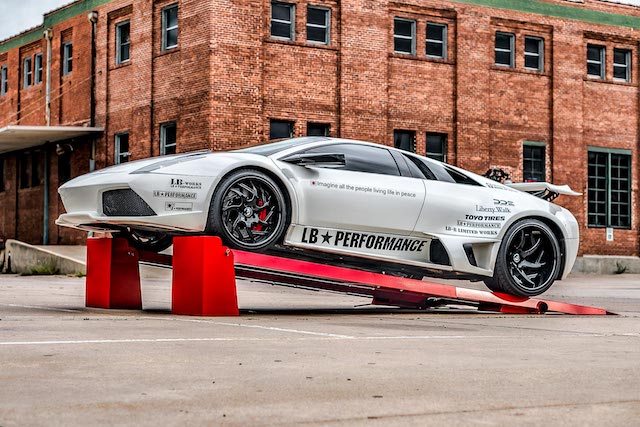
Even if you don’t have a low ground clearance car you need to lift, it’s important to consider this point carefully. If you buy a lift that won’t work on cars with less than 4 inches of ground clearance, you might be kicking yourself later.
NOTE: Some of the scissor style lifts are actually a little less than 4″ tall, which might make them seem like they’re OK for low ground clearance vehicles. However, these lifts usually can NOT lift a car from the fully collapsed position. Very often, people with low ground clearance cars have to jack them 5 inches into the air, setup a jack stand, then slide under their scissor-style lift. This is obviously not convenient.
2. You Can’t Lift Vehicles Without Designated Jack Points or Frame Pinch Points
One of the more common designs for entry-level scissor style lifts is actually two separate lifting mechanisms designed to act as one. You simply slide one lift under each side of the vehicle below a jack or frame pinch point, attach blocks (if necessary), and then lift.
While this design works great for newer unibody vehicles, it is not at all useful to people who have older cars, classic cars, or body-on-frame cars. Because the Kwik-Lift doesn’t require any jack points (it lifts a vehicle by its wheels), this is not a concern.
3. You Can’t Always Safely Lift and Work Under Scissor Style Lifts
All scissor style lifts work by lifting a vehicle between the wheels rather than at the wheels. This is problematic for a couple of reasons:
- Not all vehicles are balanced front to rear
- When work is being done on a vehicle, the front to rear weight balance can change
- These problems are exacerbated when the vehicle wheelbase is long
Let’s say, for example, that you use a scissor style lift on an older regular cab pickup truck. Most of these vehicles are not balanced front to back (most of their weight is up front), and most of these vehicles have longer than average wheelbases.
Let’s also say you’re working under this vehicle, making some modifications to the suspension. You’re pushing and pulling on a piece, and then guess what happens: Your vehicle is unbalanced front to back, and it starts to teeter.
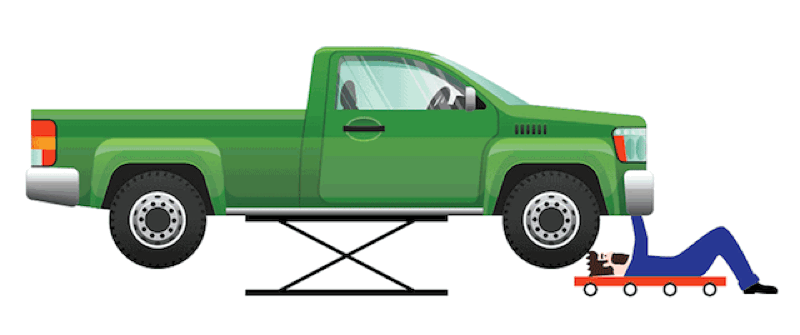
NOTE: This is obviously an ‘edge case’ – we’re NOT saying that these lifts are inherently unstable. However, because of the way these lifts work, almost any car on one of these lifts can tip backwards or forwards. All you have to do is change the weight bias enough. Remove an engine or transmission, for example, and you make the lift much less stable.
The Kwik-Lift never has this problem, because the vehicle is naturally stable when it’s on all four wheels. If you remove a wheel while using the Kwik-Lift, you can support that specific wheel with either a standard jack between the lift rail and the vehicle, or you can use one of our Center Lift bridges to keep things supported.
1 Thing That Is Much Easier With a Kwik-Lift
Setting aside the problems that we’ve outlined above, there’s one thing that should be top of mind when buying an entry-level scissor style hydraulic lift: Lift height.
Assuming you want to roll around under your vehicle on a creeper, you want a lift that places the bottom of your vehicle 26″ or so off the ground. That’s because most people find that they like about 18″ of distance between the tip of their nose and whatever they’re wrenching on. This is far enough to have a good amount of leverage when using tools but close enough to be able to see what you’re doing.
18″ from the tip of your nose, plus an inch for a creeper, works out to about 26″ of lift height.
Unfortunately, most of the entry-level scissor style hydraulic lifts have a maximum lift height of 18″. People who have these lifts often say they are “wobbly” at full lift height, which means you might not even want to go that high.

But, if you lift a vehicle 16″ off the ground, and your creeper is an inch of the ground, you’ve got very little space to work with between the tip of your nose and the bottom of the car (6 or 8″ max). That’s just not much space to work in.
Not only that, but consider:
- The average transmission is 16-18″ tall. If you want to drop the transmission and your lift only has 18″ of height, you’re going to run out of room.
- A differential housing can be 10 or 12″ tall, with a good portion of that height below the bottom the lift point. It’s going to be hard to slide around one of these on a creeper without hitting a head, a knee, etc.
- Who wants to be 6 or so inches away from whatever they’re working on? Unless you’re having a hard time seeing something, this is too close.
The Kwik-Lift doesn’t have this problem. Because it lifts a vehicle 20″ at the wheels, you always have more than 20 inches of space to work with. Since most vehicles have 4 to 8″ of ground clearance, you’ll typically have 24 to 28″ of lift height with the Kwik-Lift.
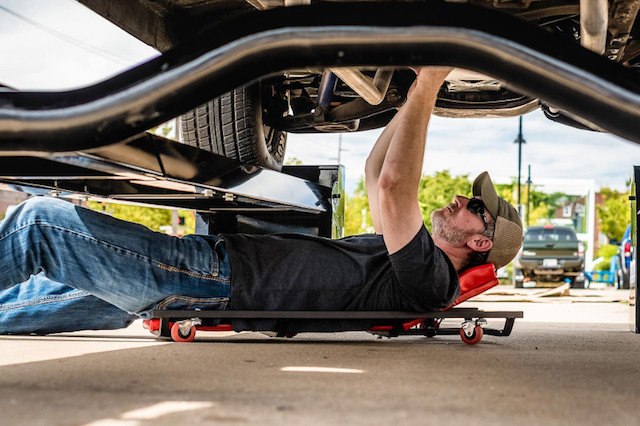
Summing Up
While the Kwik-Lift might not impress people as much as a lift that goes up and down with the push of a button, it has a lot going for it:
- The Kwik-Lift works with nearly every vehicle (low ground clearance, classic cars, etc.)
- The Kwik-Lift is safer more stable because of how it lifts
- The Kwik-Lift is more usable because it has more lift
Before you buy an entry-level scissor style hydraulic lift, take a few minutes to read up on the Kwik-Lift. As you can see here, there are a lot of great reasons to buy our product over the competition.
And, if you have any questions about whether a Kwik-Lift is the best solution for your car and/or your home garage, please contact us.

